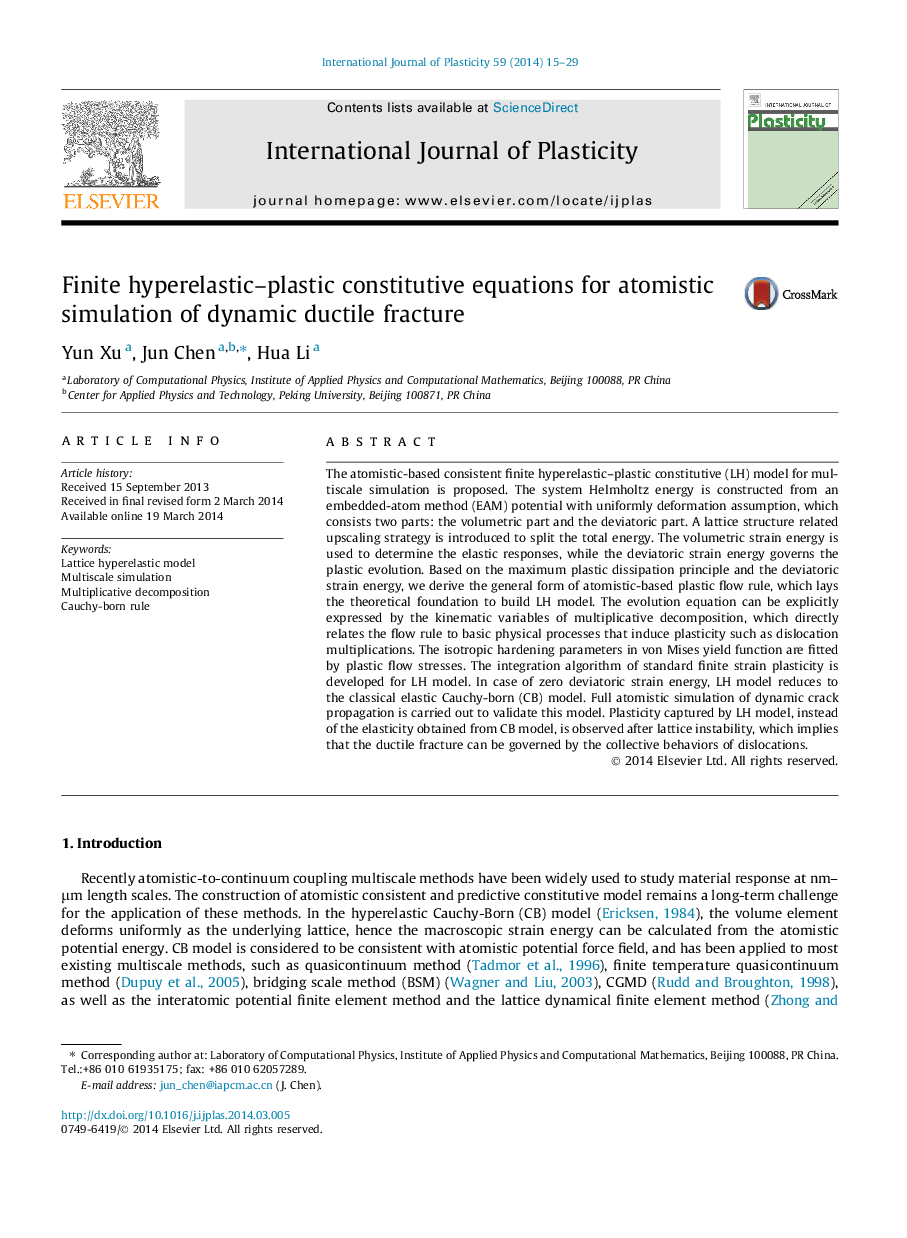| Article ID | Journal | Published Year | Pages | File Type |
|---|---|---|---|---|
| 786749 | International Journal of Plasticity | 2014 | 15 Pages |
•A new atomistic-based consistent finite hyperelastic–plastic constitutive (LH) model is proposed.•The system Helmholtz energy is split into volumetric and deviatoric part by an upscaling strategy.•The general atomistic-based plastic flow rule is derived from the principle of maximum plastic dissipation.•LH model reduces to the elastic Cauchy-born model for zero deviatoric strain energy.•Plasticity captured by LH model implies that ductile fracture can be governed by the collective behaviors of dislocations.
The atomistic-based consistent finite hyperelastic–plastic constitutive (LH) model for multiscale simulation is proposed. The system Helmholtz energy is constructed from an embedded-atom method (EAM) potential with uniformly deformation assumption, which consists two parts: the volumetric part and the deviatoric part. A lattice structure related upscaling strategy is introduced to split the total energy. The volumetric strain energy is used to determine the elastic responses, while the deviatoric strain energy governs the plastic evolution. Based on the maximum plastic dissipation principle and the deviatoric strain energy, we derive the general form of atomistic-based plastic flow rule, which lays the theoretical foundation to build LH model. The evolution equation can be explicitly expressed by the kinematic variables of multiplicative decomposition, which directly relates the flow rule to basic physical processes that induce plasticity such as dislocation multiplications. The isotropic hardening parameters in von Mises yield function are fitted by plastic flow stresses. The integration algorithm of standard finite strain plasticity is developed for LH model. In case of zero deviatoric strain energy, LH model reduces to the classical elastic Cauchy-born (CB) model. Full atomistic simulation of dynamic crack propagation is carried out to validate this model. Plasticity captured by LH model, instead of the elasticity obtained from CB model, is observed after lattice instability, which implies that the ductile fracture can be governed by the collective behaviors of dislocations.
